Classical Ukulele
There is a growing interest in playing classical music on the ukulele. From John King’s masterful arrangements from about 20 years ago to Samantha Muir’s contemporary compositions, classical ukulele is starting to gain ground in the musical world.
So, can you play classical music on ukulele? Absolutely! But we need to add a few qualifications. Let’s look at the repertoire, the techniques required for playing classical music on ukulele, and then we’ll discuss the different instruments and which one might work best for this style of music.
Repertoire
Classical Music
First of all, the ukulele does not have a traditional classical repertoire. The ukulele first developed from the Portuguese braguinha in the 1880s, which is quite late compared to the traditional “classical” repertoire. At this point not only Bach, Beethoven, and Mozart, but even Chopin and Rossini were already in the past. Ernest Ka’ai composed and published some great music in the early 1900. And much more music has been arranged and composed over the past thirty years. However, the “classical” repertoire for the ukulele is still rather limited.
Arrangements
What this means is that a lot of classical pieces you will hear on the ukulele are arrangements. And the process of arranging across instruments always involves a series of compromises. For instance, the range of the ukulele is quite different from, say, the piano or even the guitar. This means that not every piece of music makes a happy fit on the ukulele. Even for those that do, compromises still have to be made. Sometimes we have to move bass lines or use different chord inversions or even leave out notes to maintain the essence of the music.
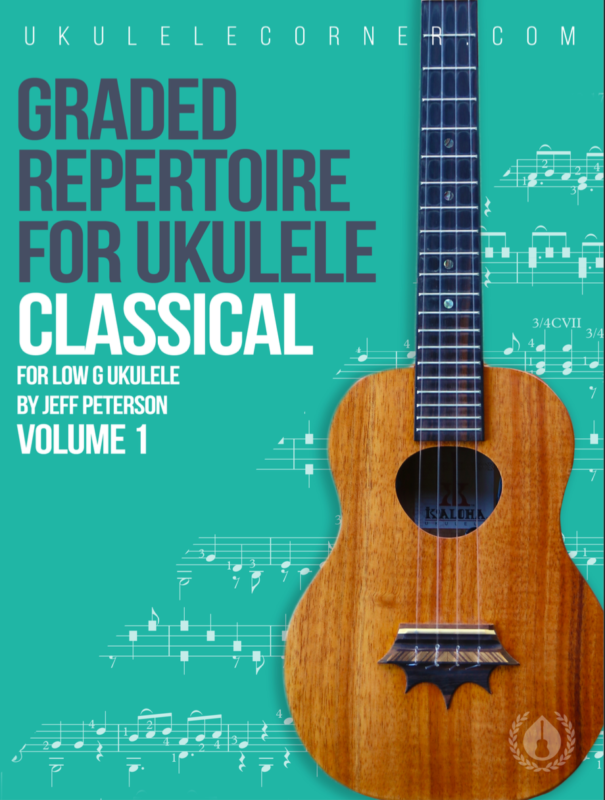 Nevertheless, there is a lot of classical music that does fit quite happily on ukulele. This unlocks a whole wealth of music from the Renaissance to the Baroque, Classical to Romantic, and many modern and contemporary pieces as well. If you’d like to see just how deep this well goes, I have arranged over sixty works for classical ukulele in our Graded Repertoire for Ukulele Classical book.
Nevertheless, there is a lot of classical music that does fit quite happily on ukulele. This unlocks a whole wealth of music from the Renaissance to the Baroque, Classical to Romantic, and many modern and contemporary pieces as well. If you’d like to see just how deep this well goes, I have arranged over sixty works for classical ukulele in our Graded Repertoire for Ukulele Classical book.
From Bach’s Air on the G String (Arioso) to Beethoven’s Für Elise to music of Paraguayan guitar composer Agustin Barrios, there is much classical music that works quite well on the ukulele.
J. S. Bach, “Arioso”
L. van Beethoven, “Für Elise”
Agustín Barrios, “Danza Paraguaya”
And not only does this music fit well on the ukulele, but arguably the ukulele enriches this music too. It adds a new voice to old and familiar music. Hearing Bach’s Prelude from the 1st Cello Suite played on the ukulele, for example, unlocks a completely new range and imaginative vista for this usually low-resonant music.
(You can learn more, in fact, on just how well Bach’s music in particular fits on the ukulele here.)
Instruments
High-G vs. Low-G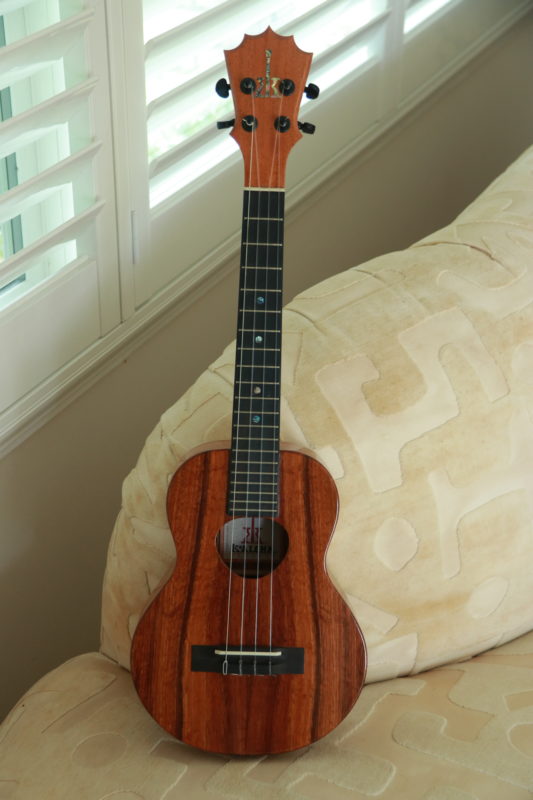
First, let’s discuss the instruments with the two traditional ukulele tuning: GCEA. The first is “high-G” or re-entrant tuning, because the G on the fourth string is tuned higher than the C on the third. While this is the typical tuning for soprano and concert ukuleles, some of these instruments will tune the G down an octave for a “low-G” tuning. These two tunings offer a different sound and resonance on the instrument. Both can be used well for different kinds of music on classical ukulele.
Both the re-entrant and low-G tunings provide interesting approaches to classical music on the ukulele. The re-entrant tuning can work well for certain Renaissance and Baroque pieces of music originally composed for instruments that used re-entrant tunings (namely, certain lutes and baroque guitars).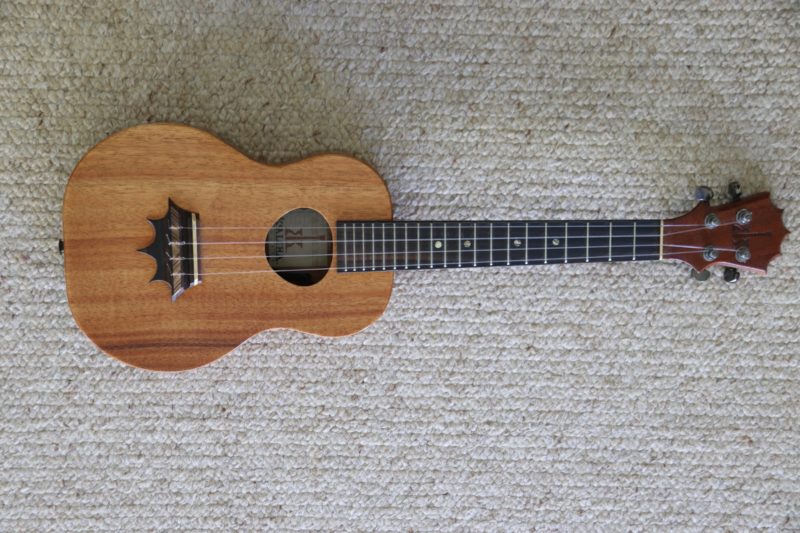
Baritone
The baritone ukulele, the largest of the ukulele family of instruments, uses a completely different tuning which is the same as the first four strings of the guitar: DGBE. This makes it an excellent instrument for adapting classical guitar music to the ukulele. The book Graded Repertoire for the Baritone Ukulele provides a full graded repertoire from beginner to advanced pieces of music specifically for the baritone uke. 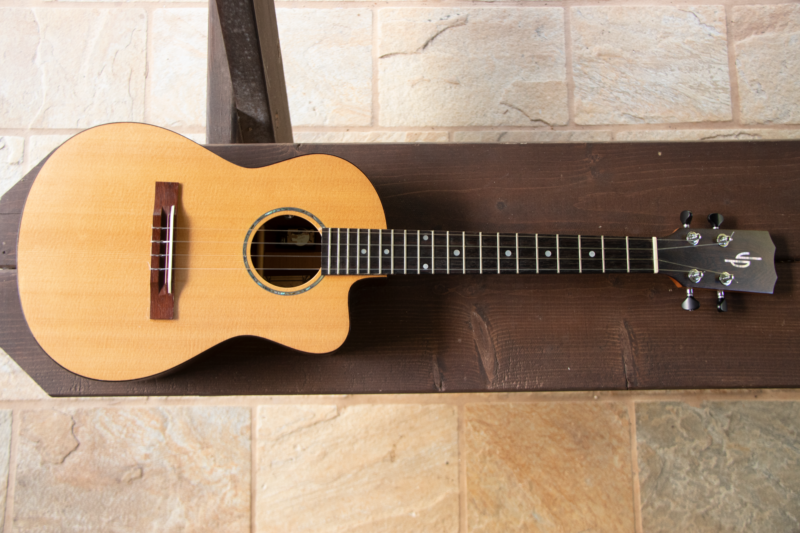
For a more in-depth look at ukulele sizes, check out our guide to finding the right ukulele size for you!
Classical Guitar Music
Music that works particularly well on the ukulele is music written for the classical guitar. I wrote a whole article posted at Classical Guitar Corner on the benefits and process of arranging classical guitar music for ukulele. Here’s a video interview I did there with Simon Powis.
Technique
Ukulele players are most used to strumming in the right hand while holding on to different moving chord shapes in the left hand. However, recently there has been renewed interest in “fingerstyle” ukulele—playing with the right-hand fingers rather than strumming chords. This opens up the possibility of playing multiple musical lines (or voices) on the instrument at the same time. This is essential for playing classical music on the ukulele.
Right Hand
So let’s first look at the right hand. The best approach to playing classical ukulele in the right hand is to use the traditional classical guitar fingering: pima. These letters are derived from the Spanish words for the digits:
- p=thumb (pulgar)
- i=index (indice)
- m=middle (medio)
- a=ring (anular)
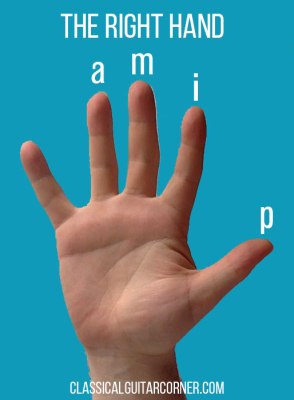
(The little or pinky finger, “c” for “chicito” in Spanish, is typically not used except when strumming for classical ukulele.)
Using these four fingers gives us the most flexibility to play across the strings. It also allows us to maintain multiple voices at once—playing melodies and harmony together.
Alternation in the Right Hand
Another feature of right-hand technique for classical ukulele is alternation in the right hand. This means we alternate between fingers when playing melodies, scales, or other single lines. For instance, let’s look at the notes A, B, C on the first string. We might play them with i, m, i instead of plucking the string each time with just the i finger. Alternation allows us to play at much faster speeds and increases our playing stamina as well because we’re using the power of two fingers (or more) rather than just one.
Left Hand
The left hand in classical ukulele also has a nomenclature associated with it, but this time with numbers instead of letters:
- index=1
- middle=2
- ring=3
- pinky=4

(Notice here we don’t use or number the thumb as the left thumb is only used as a guide on the back of the neck and does not fret notes on classical ukulele.)
Voices
One of the most important aspects of left-hand technique when playing classical music on ukulele is creating independence between different musical lines. What this means technically is holding some notes with one or more fingers while other fingers are active and moving. Thus developing independence of the left-hand fingers is very important for playing classical ukulele. It is also quite distinct from simply holding chord shapes as in other popular ukulele styles.
Campanella
Another very popular left-hand technique is holding notes across strings in the left hand and letting them ring over one another. This creates a wash of sound that replicates the sound of bells (this is a technique called “campanella,” which means little bells in Italian). This is an incredibly useful technique for creating legato (Italian for “connected”) lines that sound almost dreamlike. The re-entrant tuning (discussed below) allows for some really cool possibilities for campanella fingerings. You can hear this technique in the first theme of this arrangement of J.S. Bach’s “Jesu, Joy of Man’s Desiring”:
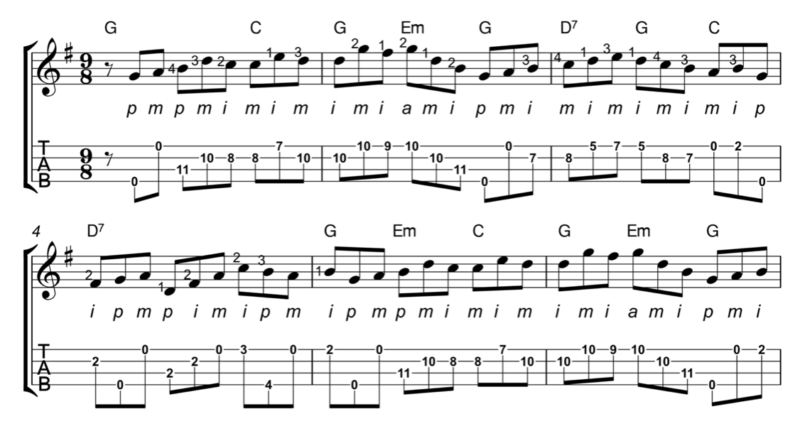
Shifting and Stretches
The size of the standard soprano ukulele means that both shifting and stretches across frets are a breeze on ukulele. A stretch of nine frets would be pretty much impossible on the classical guitar, but is much easier on the ukulele. Similarly, because the distance of frets is so small, shifting positions is much easier. All of this means that certain difficult features of standard classical guitar repertoire can be made much more manageable for ukulele players simply because of the size of the instrument. Speaking of instruments, let’s take a look at those next.
Ukulele Corner Academy
The truth is that playing classical music on the ukulele is indeed possible, especially if you have a guide to walk you through it. And at Ukulele Corner Academy we have organized an entire graded curriculum of courses on classical ukulele to help you build up the tools you need to learn to play music from Bach to Beethoven to Barrios and beyond. To learn more or sign up go here.

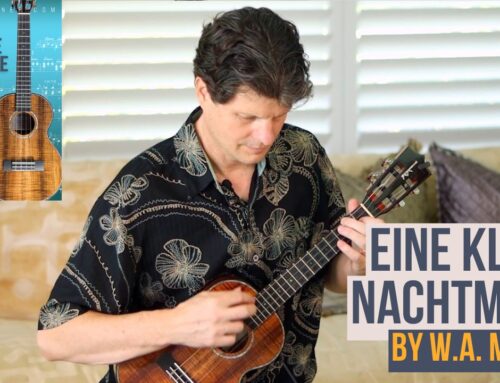
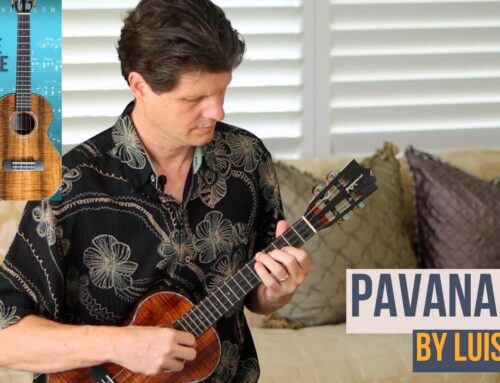
Hello
I curry have a copy of your graded classical music vol 2 for low g ukulele. Since I bought it I have moved to playing exclusively a low d baritone ukulele. Is it worth it to buy the baritone version of the book. What all are the difference s,are the tabs the same but notation different?Reason I ask is some of the fingerings in more advanced pieces are a bit of a stretch on a baritone
Thanks, Keith
Hi Keith, The tab and fingerings are the same but the notation is transposed in the baritone version of the book.
Thanks!
[…] A logical source for more music for the ukulele is from the classical guitar repertoire. This gives ukulele players wonderful new music to explore at all playing levels and also gives classical guitarists a very good head start learning the ukulele. Both instruments can be played with similar right and left hand techniques but have unique and distinct voices that make playing classical repertoire on both very satisfying to players and listeners alike. To take a deeper dive into playing classical music on ukulele, check out this article I wrote for Ukulele Corner. […]
I am very interested in classical ukulele!
Grest post! THE Bach Cello prelude and Jesu Joy have inspired me to learn them